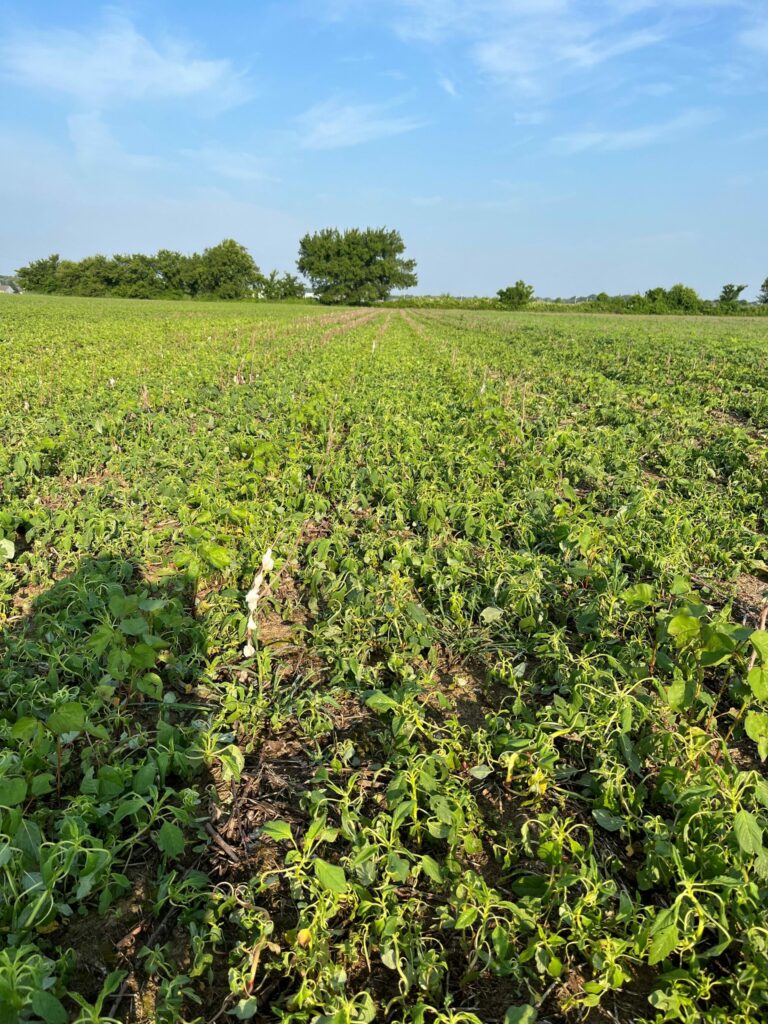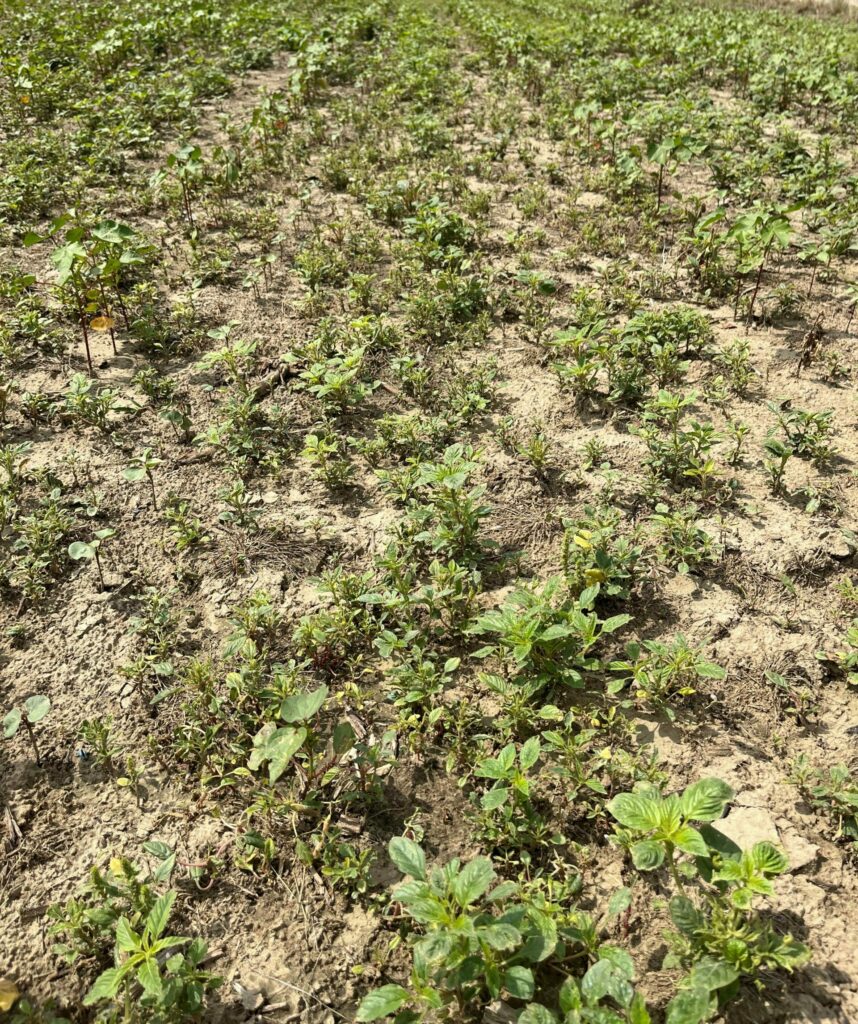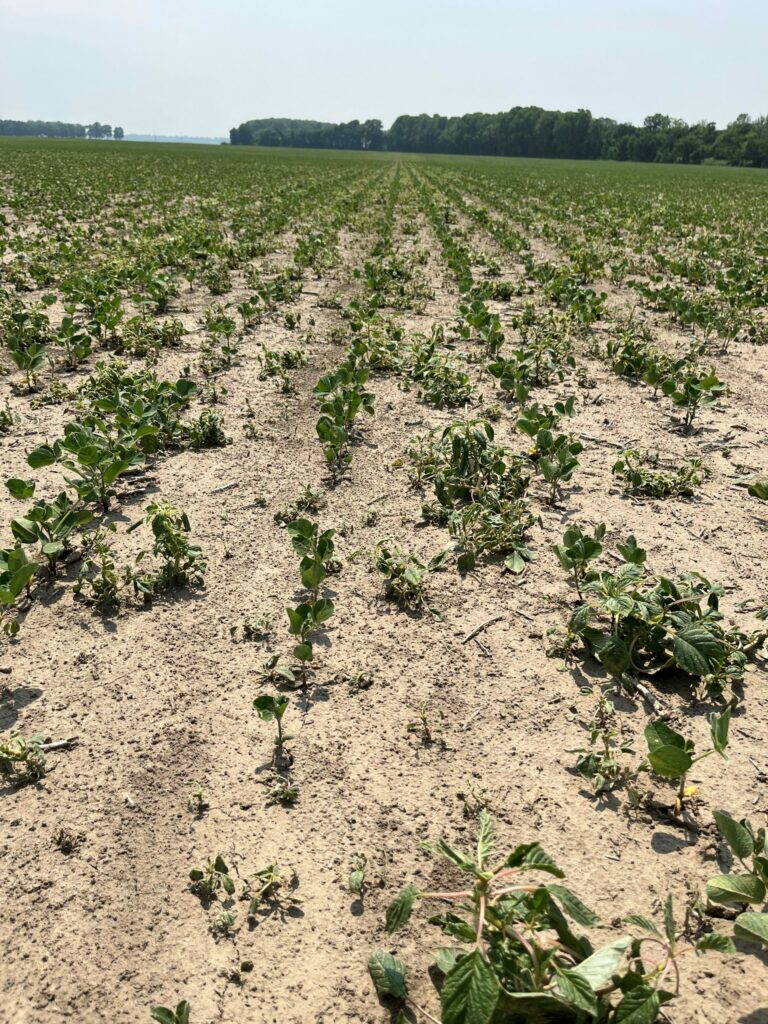
Just when it appears that ryegrass has become our most problematic weed, Palmer amaranth goes into “hold my beer and watch this” mode. In the last 10 days we have fielded numerous reports on dicamba failures to control Palmer amaranth. Just this past week we were able to visit a number of these fields.
All told we walked a over a dozen fields that would contain a couple thousand acres of cotton and soybean across 3 Counties. In these fields we often observed pigweed with a range of responses to dicamba from dead plants to some showing little effect to everything inbetween (Picture 2 ). The level of pigweed control appeared to be at best about 50% even when applications were made very timely (pigweed <2” tall) (Picture 2 and 3). These results are consistent with field and greenhouse research on dicamba-resistant Palmer amaranth biotypes by Dr. Delaney Foster who found that dicamba applications on pigweed less than 4″ only provided 50% control. She also found that if dicamba had not killed the pigweed within 14 days the weed typically recovered.
In other fields, less timely applications (3 to 6″) were made to Palmer amaranth and little control was observed (Picture 1). Though with different symptoms on the pigweed, those fields gave me a flashback to the first big outbreak of glyphosate-resistant Palmer amaranth in 2008.


We have seen dicamba-resistant Palmer amaranth starting to build in some fields the last couple years. What is different this spring is that these dicamba-resistant biotypes have moved from patches in some fields to significant infestations across large acreages.
As one concerned farmer told me on the turnrow Wednesday. “It first started slow and then it happened fast just like glyphosate.”
As mentioned in a previous blog, a Liberty application is needed now to try to take out these 2 to 3″ Palmer amaranth escapes while there is still a chance. As healthy as some of these pigweed seem to be it may take a sequential Liberty application to be successful. For the larger Palmer amaranth, sequential applications of Liberty are the last, best, option. Some have asked about respraying a pint of Engenia on Palmer amaranth that is recovering from 24 ozs. All our research would suggest that Liberty has a better chance to provide some control in these situations.

Double crop soybean planting is moving into high gear. In Crockett, Gibson, Madison and Lauderdale counties soybeans should be planted with the Enlist or XtendFlex traits where Liberty is still an option. The straight Xtend trait platform looks to be obsolete with respect to Palmer amaranth on significant acres in those counties (Picture 4).

